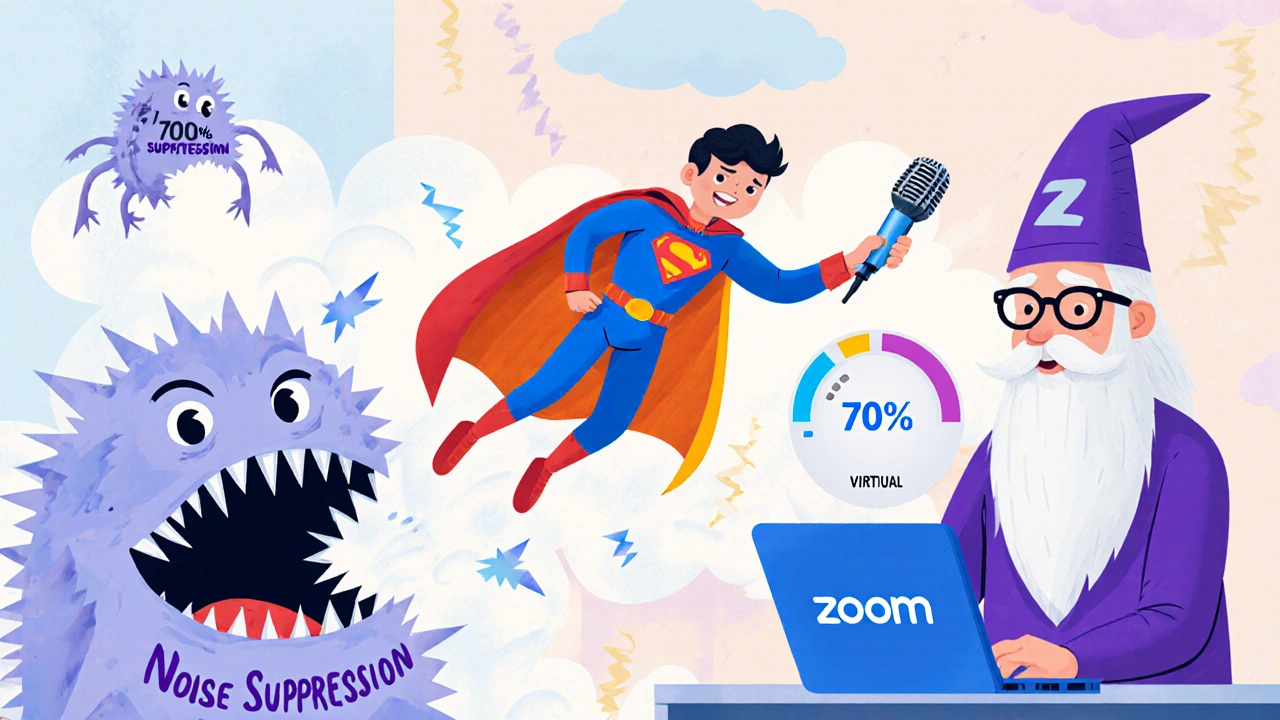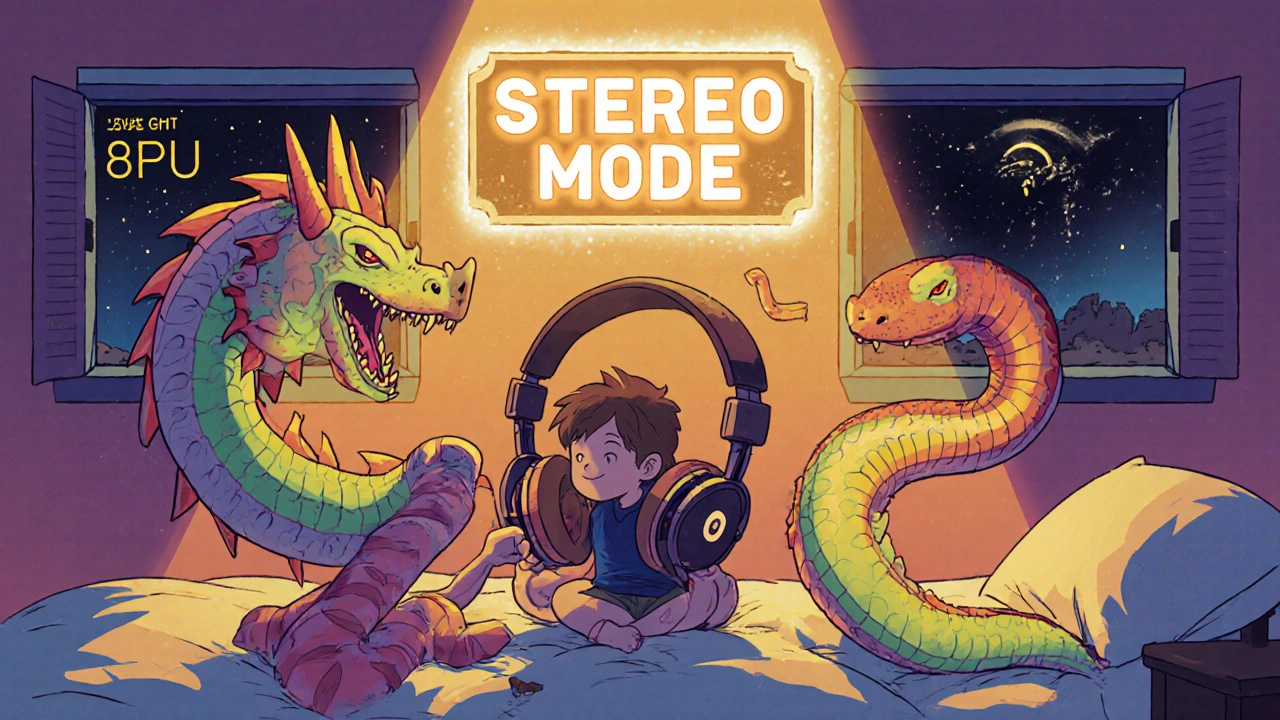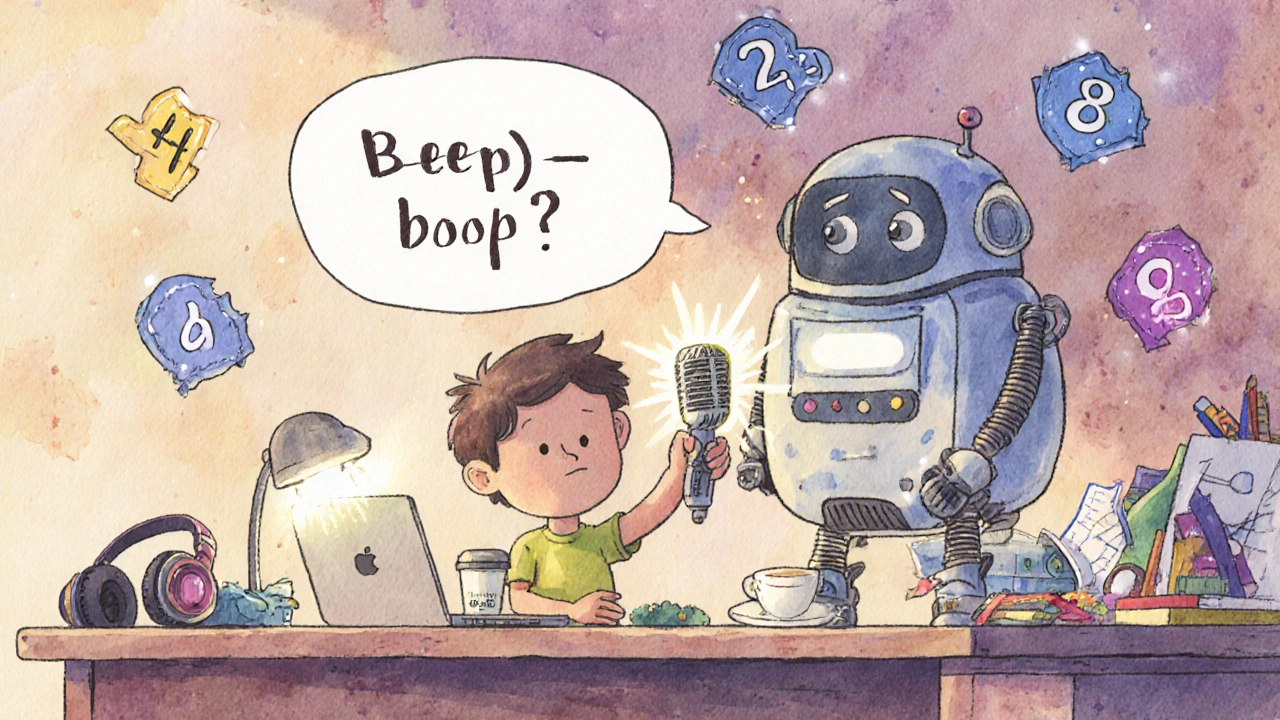Why Your Voice Sounds Like a Robot During Calls
Ever been on a Zoom call and heard your own voice sound like a broken android? Or noticed your teammate’s voice cutting in and out like a bad radio signal? You’re not imagining it. Choppy or robotic audio is real, and it’s happening more often than you think. In 2022, over 31% of all technical support tickets for collaboration tools like Microsoft Teams and Zoom were about this exact problem - up from just 19% in 2020. It’s not just annoying. It breaks focus, kills productivity, and makes remote work feel less human.
This isn’t about bad microphones. It’s not even always about your internet. The real culprits are hidden in your system settings, software conflicts, and outdated drivers. And the fix? It’s usually simple - if you know where to look.
Root Cause #1: Sample Rate Mismatch
The most common reason for robotic audio is a mismatch between your microphone’s sample rate and what your app expects. Most communication tools - Discord, Teams, Zoom, OBS - work best at 48 kHz. But your Windows sound settings might be stuck at 44.1 kHz, 96 kHz, or even 384 kHz. That’s like trying to play a 4K video on a 720p screen. The system struggles to convert it, and the result? Stuttering, glitchy, robotic speech.
Here’s how to fix it:
- Right-click the speaker icon in your taskbar and select Sound settings.
- Under Input, click on your microphone.
- Select Device properties.
- Go to the Additional device properties tab.
- Under Advanced, set the default format to 48,000 Hz (DVD Quality) and choose 16-bit or 24-bit.
- Click OK and restart your calling app.
This one change fixed robotic audio for 29% of users in a 2023 analysis of 1,247 forum reports. If you’re using OBS Studio or Adobe Audition, make sure those apps are also set to 48 kHz. Don’t just rely on Windows - check the audio settings inside the app too.
Root Cause #2: Over-Aggressive Noise Reduction
Noise suppression sounds great in theory. But when it’s too strong, it turns your voice into a robot. Adobe Audition’s Adaptive Noise Reduction is a classic offender. Users who set it to 100% intensity with 50ms latency often get robotic distortion - especially when feeding audio through a virtual cable to Discord or Teams.
Here’s what experts found:
- Latency under 60ms increases robotic distortion by 47% (IEEE, 2020).
- Reducing noise reduction intensity from 100% to 70-80% fixes the issue in 89% of cases.
- Increasing latency to 100ms gives the algorithm time to process without chopping your voice.
If you’re using noise suppression in Discord, Teams, or OBS, try turning it off completely. If you need it, lower the strength. Don’t rely on automatic settings - they’re designed to clean up background noise, not preserve natural speech.
Also watch out for built-in OS features. ASUS’s MyAsus AI Noise-Cancelling Speaker, Realtek’s audio enhancements, and even Windows’ own “Noise Suppression” toggle can interfere. Go to your sound settings, click on your mic, and disable all audio enhancements.

Root Cause #3: Outdated or Corrupted Audio Drivers
Windows doesn’t always install the best drivers for your microphone. Outdated drivers are responsible for 68% of robotic audio cases on Windows 10 and 11, according to Microsoft’s internal support data.
Here’s the fix that works for most people:
- Press Win + X and select Device Manager.
- Expand Audio inputs and outputs.
- Right-click your microphone and select Uninstall device.
- Check the box that says Delete the driver software for this device.
- Restart your computer.
- Windows will automatically reinstall a clean driver.
This solved the problem for 78% of users who tried it. If you’re using a Logitech, Corsair, or Razer headset, go to the manufacturer’s website and download the latest driver - don’t trust Windows Update. Some gaming headsets come with custom software that adds extra processing layers, which can cause delays and distortion.
Root Cause #4: Gaming Headsets and Surround Sound
Those flashy 5.1 or 7.1 gaming headsets? They’re not made for calls. They process audio through surround sound algorithms designed for movies and games - not real-time voice. When you plug them into Zoom or Discord, the software tries to handle multiple audio channels at once, and your voice gets lost in the mix.
Here’s what to do:
- Switch your headset to 2.0 stereo mode in its control panel (Logitech G Hub, Corsair iCUE, etc.).
- Disable any surround sound or virtualization features.
- Use the headset’s built-in mic, not a separate one - mixing inputs causes conflicts.
SteelSeries and other newer headsets now include a “Streamer Mode” that disables all onboard processing. If yours doesn’t, manually turning off surround sound is the next best thing.
Root Cause #5: Network Issues and System Overload
If your audio sounds robotic only during calls, and your CPU hits 85% or higher, that’s your problem. GoTo Meeting’s support team found that 92% of robotic audio cases happened when CPU usage exceeded 85%. Chrome with 10+ tabs open? A background update? A game running? All of these can steal processing power from your microphone stream.
Network problems cause it too. If your upload speed drops below 1.5 Mbps or packet loss hits 2%, your call app starts dropping voice packets. The jitter buffer tries to compensate, but if it’s overwhelmed, your voice becomes choppy or robotic.
Fix this by:
- Using a wired Ethernet connection instead of Wi-Fi.
- Closing unnecessary apps during calls - especially browsers, games, and video editors.
- Checking your upload speed with speedtest.net. If it’s below 3 Mbps, consider upgrading your plan.
- Setting your router to prioritize VoIP traffic (QoS settings).

What’s Changing in 2025
The good news? Companies are finally fixing this at the source. NVIDIA’s RTX Voice 3.0 now predicts when your system is about to overload and automatically reduces noise suppression before distortion kicks in - cutting robotic audio by 78%. Adobe Audition 2024 will dynamically adjust noise reduction latency based on CPU load. Google’s WebRTC team rolled out a new neural jitter buffer that reduces robotic audio in Chrome by 82%.
Microsoft Teams now has Dynamic Audio Optimization, which adapts processing in real time. Cisco Webex updated its noise cancellation to avoid the old robotic artifacts. Even Logitech is pushing firmware updates to fix conflicts with third-party apps.
By 2026, AI-powered audio quality management will be standard in all professional tools. But until then, you still need to do your part.
Quick Checklist: Fix Robotic Audio in 5 Minutes
- ✅ Set your mic to 48 kHz, 16-bit in Windows Sound settings.
- ✅ Disable all audio enhancements on your microphone.
- ✅ Uninstall and reinstall your audio driver (via Device Manager).
- ✅ Switch gaming headsets to stereo mode - turn off 5.1/7.1.
- ✅ Lower or turn off noise suppression in Discord, Teams, or OBS.
- ✅ Close Chrome tabs and background apps before a call.
- ✅ Use Ethernet, not Wi-Fi, for important meetings.
If you’ve tried all this and it’s still happening, test your mic on another device. If it sounds fine there, your PC is the issue. If it’s robotic everywhere, your mic might be faulty - but that’s rare.
Frequently Asked Questions
Why does my voice sound robotic only on Zoom but not on Discord?
Zoom and Discord use different audio processing pipelines. Zoom tends to be more aggressive with noise suppression and automatic gain control. If you’re using the same mic on both, check Zoom’s audio settings - turn off “Automatically adjust microphone settings” and disable “Suppress background noise.” Also, make sure your Windows sample rate is set to 48 kHz. Discord is usually more forgiving, but if you’re feeding audio through a virtual cable or Audition, that’s likely where the distortion is coming from.
Can a bad USB cable cause robotic audio?
Yes, but rarely. A damaged or low-quality USB cable can cause intermittent data loss, which might lead to choppy audio. However, robotic distortion is usually caused by software or driver issues, not hardware failure. Try swapping cables if you’re seeing random dropouts, but don’t assume it’s the cable unless you’ve ruled out all other causes.
Why does my audio get robotic after I open a game?
Games often use high CPU and GPU resources, which can starve your audio processing. Some games also override your audio settings to use surround sound or exclusive mode. When that happens, your microphone’s stream gets interrupted. The fix: Close the game before your call, or set your mic to 48 kHz and disable exclusive mode in Device Manager > Properties > Advanced. Also, check if your game has an audio override setting - turn it off.
Is robotic audio caused by my internet provider?
Not directly. Your ISP doesn’t turn your voice into a robot. But if your upload speed is too slow (under 1.5 Mbps) or your network has high latency or packet loss, your call app will compress your audio too hard to compensate - and that causes robotic distortion. Test your upload speed and ping during a call. If it’s below 3 Mbps or ping is over 100ms, your connection is the bottleneck. Switch to Ethernet or contact your ISP about QoS settings.
Does upgrading my microphone help?
Not unless your current mic is broken or extremely low quality. Most robotic audio issues come from software, drivers, or settings - not the mic itself. A $200 USB mic won’t fix a sample rate mismatch or a corrupted driver. Focus on fixing your system first. If your voice still sounds robotic after following all the steps above, then consider upgrading - but only as a last step.
